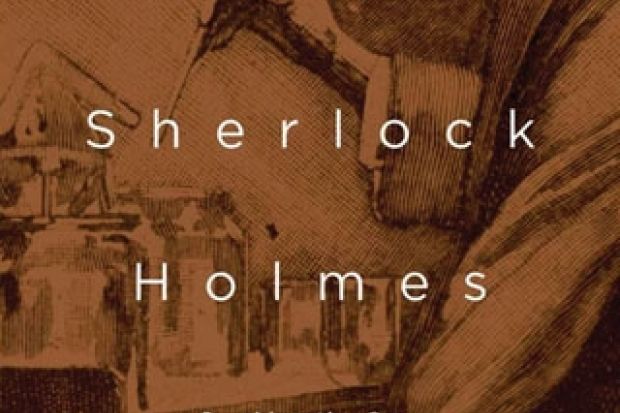Readers could be forgiven for seeing this as yet another title about Arthur Conan Doyle’s great detective. As there is a steady stream of publications on both Sherlock Holmes and his creator we might justifiably ask: why another? At first this appears to be a work with an annoyingly dense use of references, and the analysis of the Sherlock canon is initially expressed in a rather stilted way. But this is soon no more than a minor irritation in a refreshing study of the stories and novels, written by a man who is at once a scholar and a lover of the Holmes oeuvre.
It soon becomes evident that the mock science textbook format, with its numbered paragraphs and sub-paragraphs, is merely a subtle ploy to convey the intention of applying a rational method - one that Holmes would have relished - to the book’s style and layout. The format proves quite helpful, directing the reader to order their thoughts, following the trusty guide as one would a teacher in a lab.
The Scientific Sherlock Holmes is two things: a quick reference on forensics and methods of detection, and a meticulous account of the science behind the Holmesian investigations. Holmes aficionados will surely have invested in the annotated edition edited by Leslie S. Klinger in 2006 but it is an unwieldy volume best suited to library reference shelves. What James O’Brien has done is to condense a massive amount of background information into a slim volume and the result is a resounding success.
Readers already familiar with the Holmes literature may use it for quick consultation, with its neat explanations of such topics as Bertillon analysis or fingerprints, but those wishing to know more may decide to grapple with the author’s explanations of chemistry as used in the stories. There are accounts of uses of specific criminological procedures and lines of thought but more interesting is the use of case studies for each subject, when the material goes beyond the Holmes stories and includes true crime cases.
Arguably the most intriguing material is that concerning the state of forensic science at the turn of the 19th century. William Guy published his Principles of Forensic Medicine (a methodical attempt to explain principles of scene-of-crime procedure) as early as 1844 but the important discoveries came much later, many of these being made at the time Conan Doyle was writing his crime stories and, indeed, exercising his skills as an amateur detective. O’Brien makes it clear that Conan Doyle and his fictional creation were aware of the uses of most forensic science; what the general reader may not know is how accurately the science in the stories reflects the actual knowledge of the time and the theories that Conan Doyle wished to use in the fiction.
Naturally, many of Holmes’ investigative methods touch on the boundaries between established forensics within the official criminal justice system c.1900 and the realms of fantasy. The Scientific Sherlock Holmes will help here. A good example is the use of graphology: Conan Doyle’s friend and fellow Crimes Club member, Lord Pearson, was an enthusiast who wrote a handbook on the topic; when Conan Doyle used handwriting in his fiction, it was with a reasonable knowledge of the subject.
But what is perhaps most interesting to the reader in terms of Conan Doyle’s own life and the influences on him is O’Brien’s succinct account of his literary forebears, such as Edgar Allan Poe and Émile Gaboriau. Overall, this book is highly recommended as a valuable addition to the library of Holmesians and Sherlockians everywhere.
The Scientific Sherlock Holmes: Cracking the Case with Science and Forensics
By James O’Brien
Oxford University Press, 256pp, £18.99
ISBN 9780199794966
Published 28 February 2013
Register to continue
Why register?
- Registration is free and only takes a moment
- Once registered, you can read 3 articles a month
- Sign up for our newsletter
Subscribe
Or subscribe for unlimited access to:
- Unlimited access to news, views, insights & reviews
- Digital editions
- Digital access to THE’s university and college rankings analysis
Already registered or a current subscriber?




